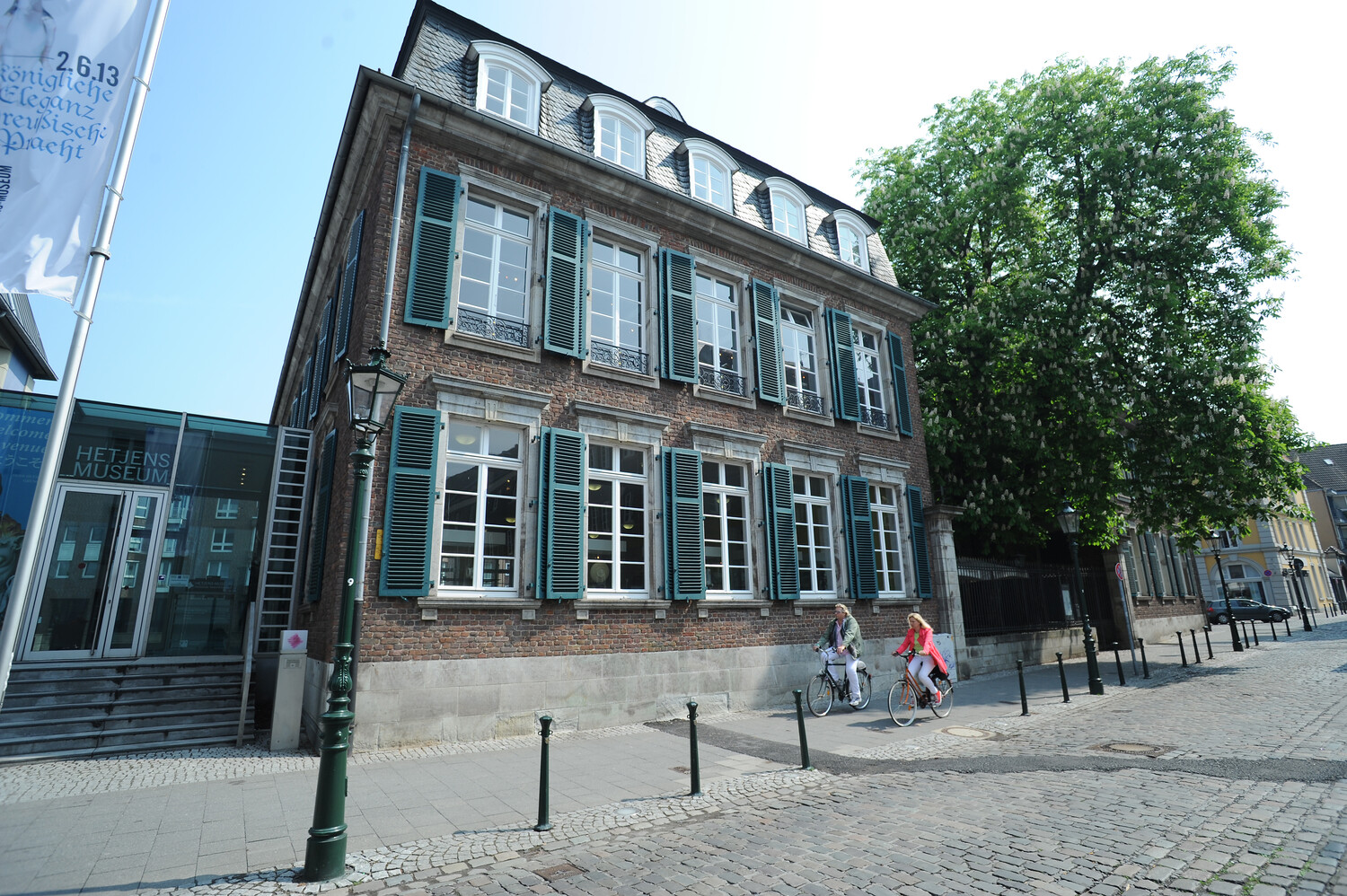
Fire your imagination at the Hetjens Ceramics Museum

Fire your imagination at the Hetjens Ceramics Museum
These are just six of the exceptional pieces on show at the Hetjens Ceramics Museum – and there are plenty more to see.
The Hetjens Museum presents a rich collection of ceramic art spanning 8,000 years. Featuring everything from amphorae and classical porcelain to contemporary art, the museum celebrates all things ceramic. Located in Palais Nesselrode, the Hetjens Museum is a gem among Düsseldorf’s arts venues. Here, you can marvel at a world-class collection of ceramics, many of which have their own story to tell. We have selected six exhibition pieces that we hope will inspire you to visit and provide a glimpse into the fascinating world of porcelain.
Kakiemon: from Japan to Saxony
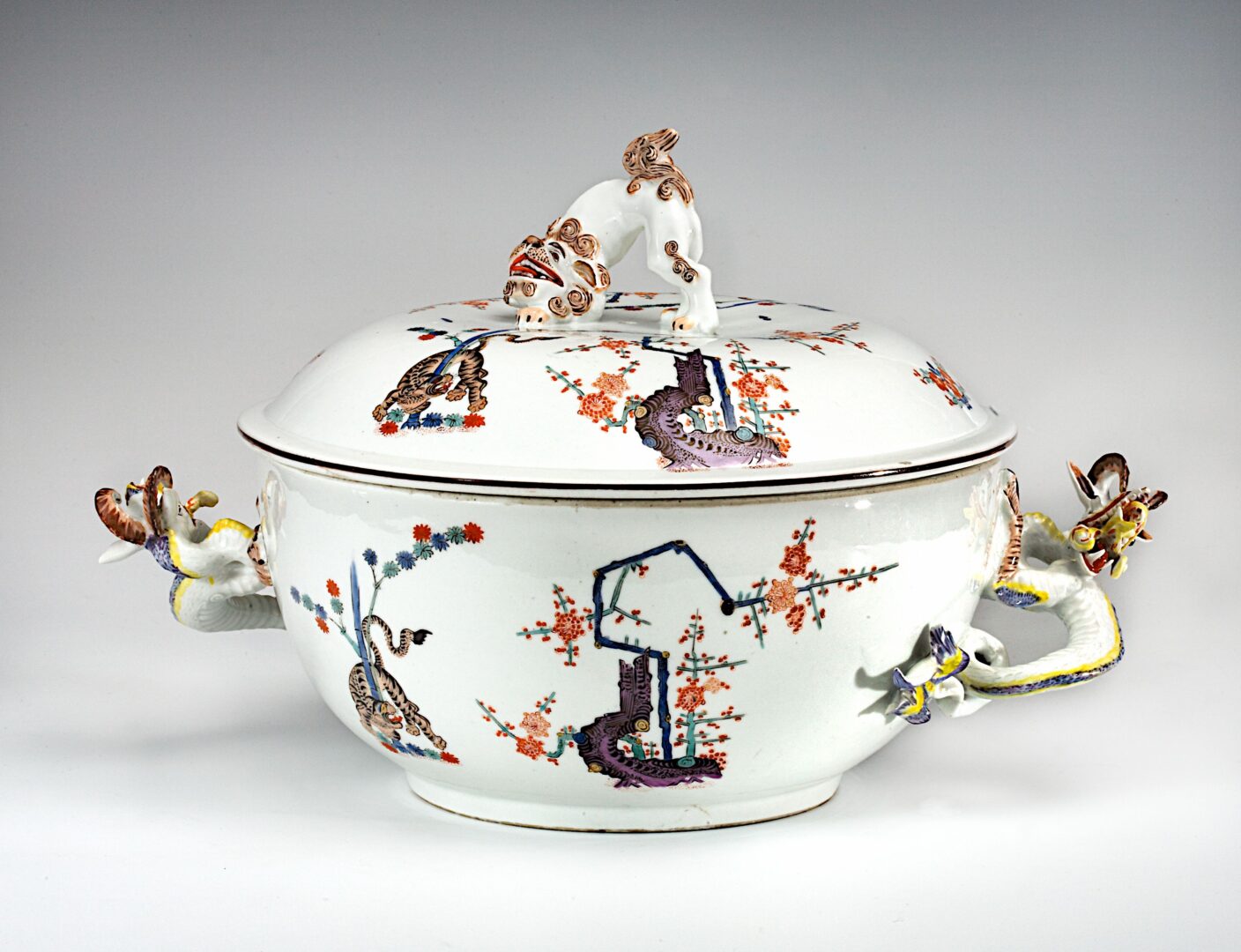
There are many well-known porcelain manufacturers in Germany, but Meissen porcelain is the most popular – like this soup tureen from the estate of Augustus the Strong (1670 – 1733). Whether this avid collector of porcelain was served soup from this tureen is immaterial. What’s important is that this piece is a fine example of early European porcelain. The painted decorations were copied almost like-for-like from the Japanese objects in the collection belonging to Augustus the Strong. When the Meissen manufactory opened in 1710, Europe did not have its own style of decorative painting, and so people drew on the designs from the Far East. This is also how the Japanese Kakiemon pattern came to be known as the ‘Yellow Lion’, when in fact it depicts a tiger. But of course neither the Japanese nor Saxon painters had actually seen a lion or tiger in real life!
‘The Hand Kiss’ and a curious story about the pug
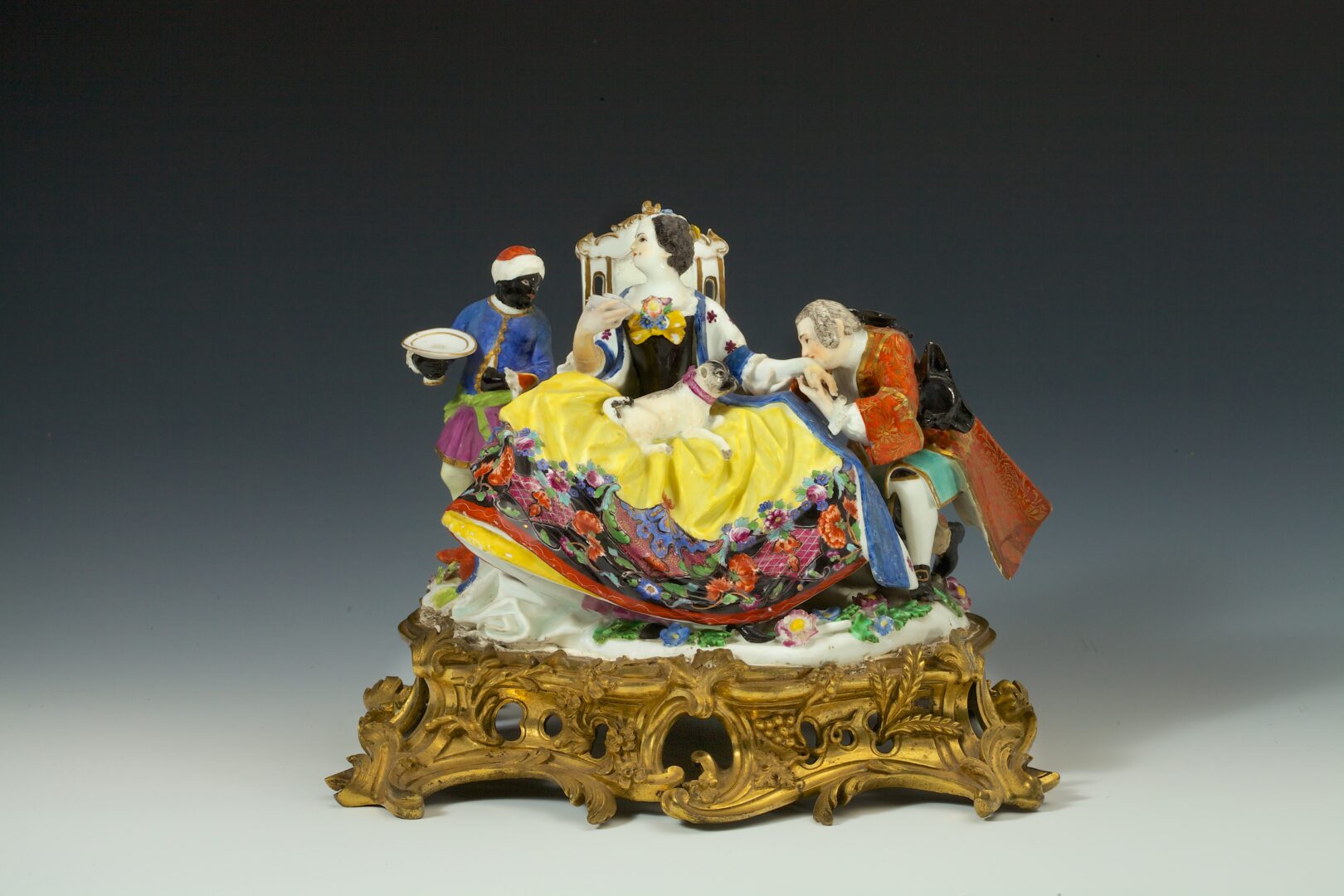
‘The Hand Kiss’ is another masterpiece from the Meissen manufactory that is on display at the Hetjens Museum. In the foreground, you can see a lady with a voluminous whalebone skirt and a pug sitting on her lap, offering her hand to a gentleman for a kiss, while looking at the pageboy standing behind her. This piece was designed by Meissen modeller Johann Joachim Kändler in around 1740. The Düsseldorf sculpture dates from this time. ‘The Hand Kiss’ was sold in France, however, which is evident from the gilt-bronze base. While porcelain was primarily used as a table decoration in Germany, it was seen in France as an integral part of the furnishings. A word about the pug: pugs were extremely popular in Saxony in the 1740s. There were even secret orders of the pug, which were modelled on the Freemason lodges that were prohibited under Catholicism. As an initiation ritual for these secret organisations, candidates had to kiss the backside of a pug, which was of course much easier with a porcelain model.
A rare rococo vase
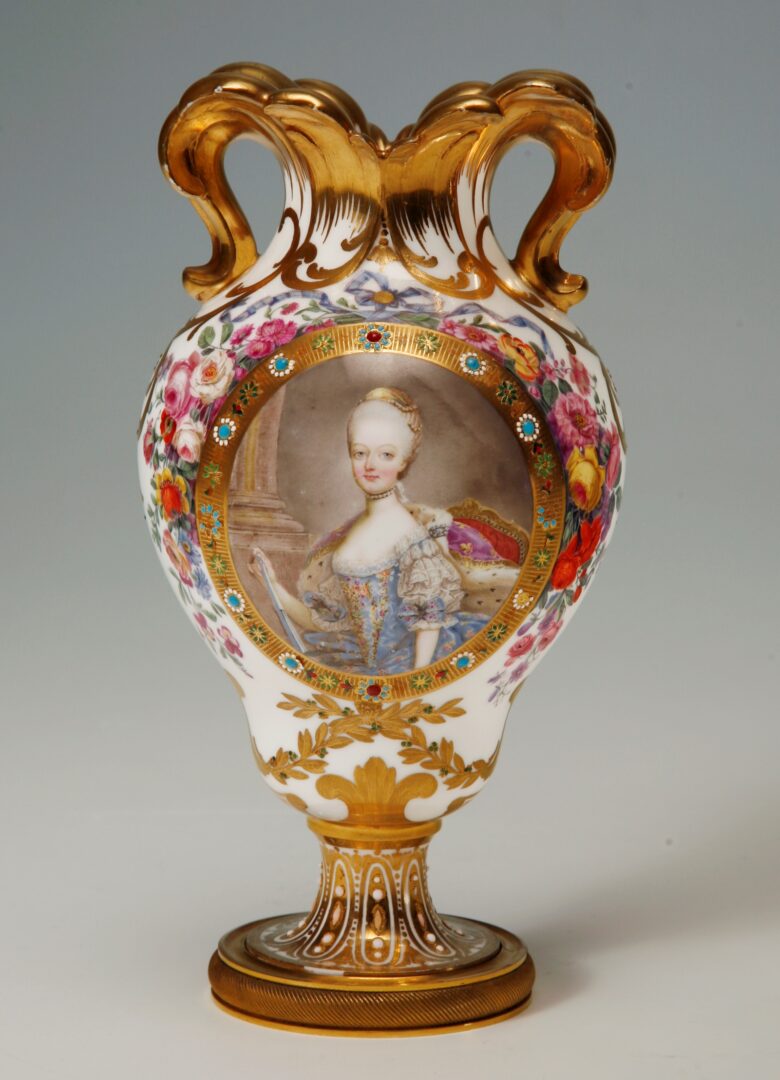
The Meissen manufactory is to Germany what the grand old Manufacture royale de porcelaine de Sèvres – Sévres for short – is to France. The lady depicted on this richly painted vase with her high forehead, typical of the rococo period, is none other than the young Queen Marie Antoinette. This piece was created between 1770 and 1774 at the beginning of her reign and was intended to be a diplomatic gift – as a pair together with Marie Antoinette’s husband, Louis XVI. Only six pairs of these vases have survived to this day and one of these is on display at the Hetjens Museum. These vases were meant to attest to the beauty of the young queen on the one hand, and to illustrate the wealth of her husband on the other. A total of three painters were involved in creating these ‘vases with little ears’: one for the portrait, one for the flowers and one for the gold painting. But the splendour of these rococo vases failed to bring good fortune to Marie Antoinette, daughter of the Austrian Empress Maria Theresa: she was guillotined in 1793 amid the turmoil of the French Revolution, only a few months after her husband.
Grinning cat
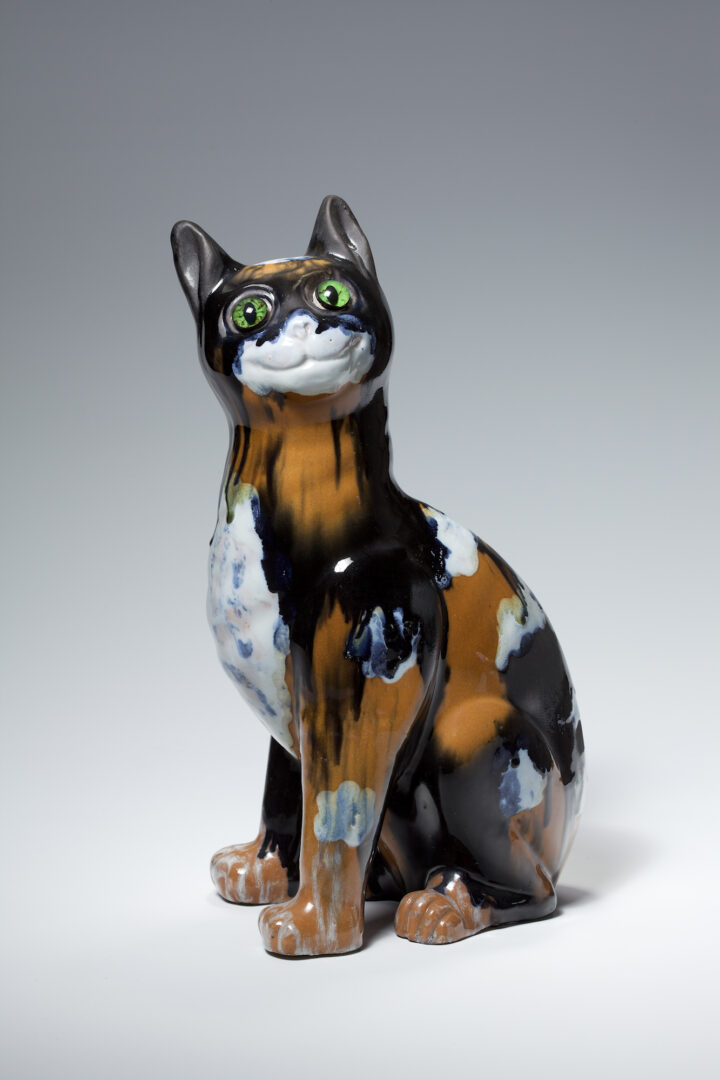
Long before cat videos went viral on social media, art nouveau artist Émile Gallé created this grinning cat figurine with its ears pricked up and glistening green eyes made of glass. The drip glaze was novel at the time and marked a departure from the naturalistic style of painting that was customary on animal figurines. Here, the cat’s fur has an abstract quality. In the 19th century, cat figurines were not considered to be pretentious pieces for cabinet displays, but were often used as a playful parlour ornament. In Japan, the country where ceramic cat figurines originated, ladies of the aristocracy would use them as a neck support to prevent their elaborately pinned-up hairstyles from being flattened while they slept.
The mythical creature ‘Good Times’
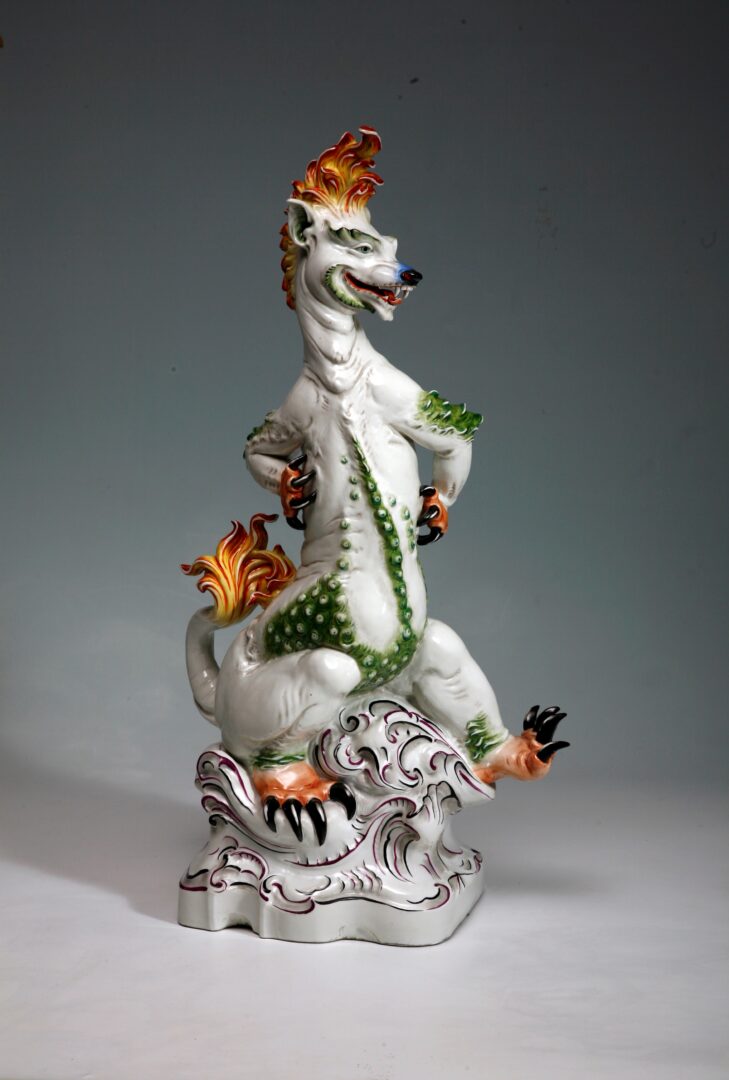
The mythical creature ‘Good Times’, made by the Aelteste Volkstedter Porzellanfabrik (Oldest Volkstedt Porcelain Factory), is about a metre high and dates from 1921. At the Hetjens Museum, however, this dragon with its dotted decoration goes by the name of Freddy. The Hetjens Museum is home to half of the series created by modellers Arthur Storch and Hugo Meisel, which includes its counterpart ‘Bad Times’ and a further six figures, and therefore has the world’s most comprehensive collection of these extraordinary creatures. They were produced for the Porcelain Palace at Leipzig Fair. Storch and Meisel produced around 20 models of fantastical large-scale sculptures for the occasion, the likes of which had only been seen during the Kändler era at Meissen. ‘Good Times’ and ‘Bad Times’ stand at the entrance to the first floor. ‘Bad Times’ sits on a pedestal adorned with ornaments, its hind legs crossed and torso erect, its tail wound around its neck with its head pointing upwards to the right and its abdomen and lower body adorned with curls of fur.
Japanese vases for Europe
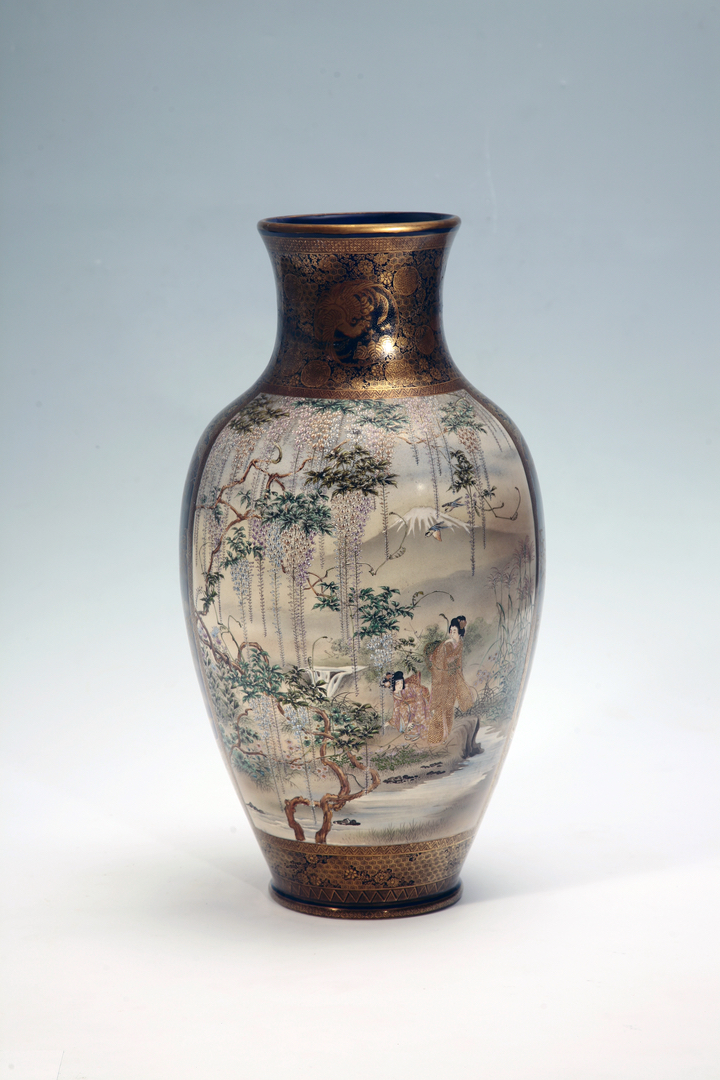
At first glance, this vase may look like a classical Japanese piece but it was actually made for western patrons. The ivory-coloured Satsuma ceramics with their magnificent paintings caused quite a stir at the World Expositions in Vienna (1873) and Philadelphia (1876). Japan had long been closed to western trade and visits, but opened up during the Meiji era at the end of 19th century, and Europe came into contact with affordable Japanese porcelain for the first time. The gilded polychromatic enamel overglaze on this Satsuma vase was adapted so that it would appeal to western tastes. Vases such as these became one of the most recognisable and profitable export products in the Meiji era, and still captivate exhibition-goers today.
This article is supported by REACT-EU.
Images: Hetjens - German Ceramics Museum

